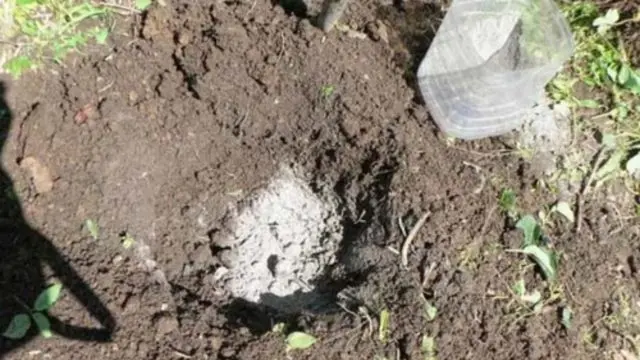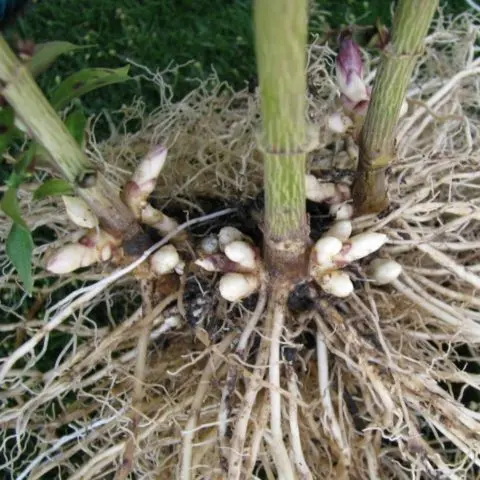Contents
Toothed buzulnik, or ligularia (Ligularia dentata), is a herbaceous perennial shrub that naturally grows in Europe and Asia. This plant has recently gained popularity as an element of landscape design, due to its unpretentiousness, shade tolerance and long flowering. Planting and caring for a toothed buzulnik does not involve complex actions, but it has some features, so for its successful cultivation, you need to familiarize yourself with them in advance.
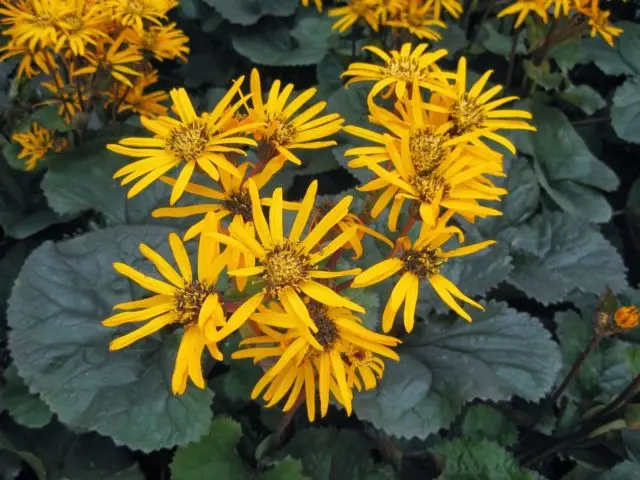
Buzulnik toothed can grow in one place up to 20 years
Description of the toothed buzulnik
Ligularia toothed is one of the representatives of the Aster family. The plant forms erect shoots 1,0-1,5 m high, they are green with a brown tint. The leaves of the serrated buzulnik are large, up to 60 cm, heart-shaped or triangular in shape. They are located at the bottom of the shrub and form a lush basal rosette.
The leaves that grow on the shoots are much smaller. The color of the plates can be pure green or with a purple tint, depending on the variety. There is a serration along the edge. In some species, the main color of the plates may be green, and the veins may be reddish or purple. The leaves have long petioles from 20 to 60 cm.
The plant is characterized by corymbose, spike-shaped inflorescences, which consist of orange-yellow baskets with a diameter of 7-10 cm. They, in turn, include 2 types of flowers: tubular in the center and reed on the periphery. The seeds of this plant are formed in mid-autumn, they reach a length of 10 mm and have a ribbed structure.
The best varieties of toothed ligularia
In nature, there are about 150 species of toothed buzulnik, but only some of them are distinguished by high decorative qualities. Therefore, the most unpretentious and shade-tolerant varieties are used in landscape design, which allows them to be used to decorate shady places in a garden or area where other perennials die.
Toothed buzulnik Dark Beauty
Tall cultivar with large kidney-shaped leaves. The color of the plates is dark purple with a glossy sheen. The height of the bushes at the toothed buzulnik Dark Beauty reaches 1,0 m. The inflorescences are paniculate, the flowers resemble daisies in shape, their diameter reaches 7-8 cm. Their center is light brown, and the petals are bright yellow along the edge. This variety belongs to the late flowering category. The first buds on the shrub open in August. The duration of flowering is 30 days.
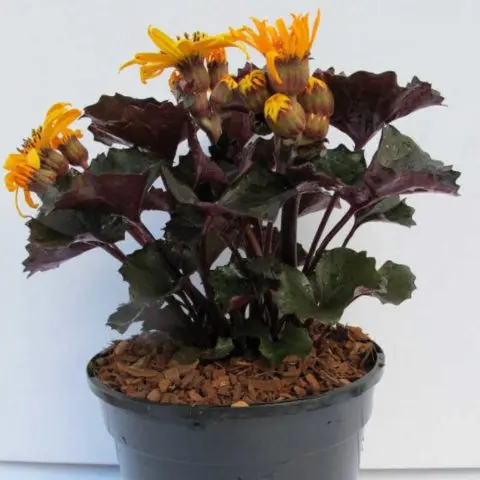
Buzulnik Dark Beauty is frost-resistant, but in snowless winters it can freeze slightly
Toothed Buzulnik Midnight Lady
Spectacular variety with sprawling lush bushes, reaching a height of 80 cm and a width of 60 cm. According to the description, the leaves of the serrated buzulnik Midnight Lady are large, contrasting. The upper surface of the plates is dark green, and the reverse is almost black. The inflorescences are paniculate, the diameter of the flowers-baskets is 7-8 cm. This variety looks spectacular in group compositions, mixborders. Planting and caring for the Midnight lady’s toothed buzulnik is no different from other species.
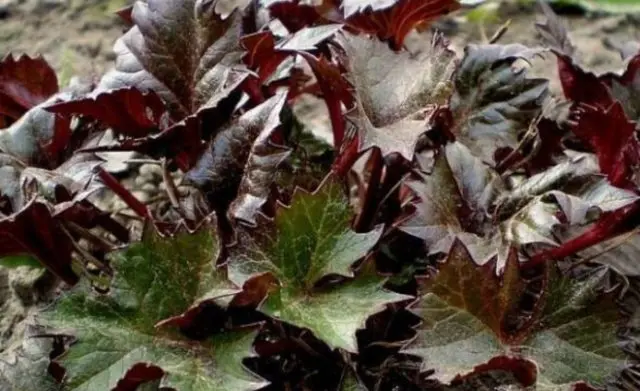
Midnight Lady blooms from early July to late August.
Toothed buzulnik Pandora
This variety of culture is among the novelties. Pandora is distinguished by compact bushes 30-40 cm high, with small-sized jagged leaves of a dark purple color, which gives the shrub a special decorative effect. The flowers of this variety of buzulnik are large, rich yellow-orange hue.
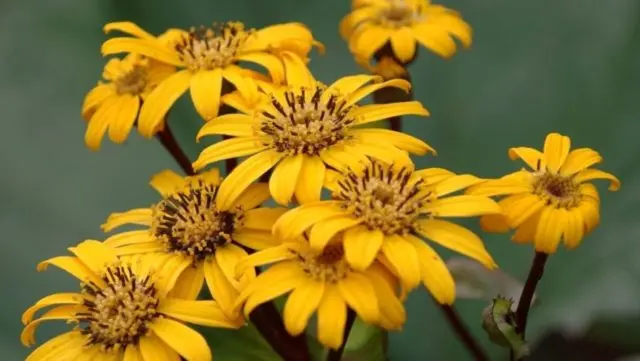
Buzulnik toothed Pandora can be grown as a tub plant
black purple
A spectacular variety of serrated buzulnik with a height of bushes up to 1,0 m. The color of the heart-shaped leaves is dark purple, which look contrasting in combination with yellow-orange flowers-baskets. Landscape designers recommend using Black purple jagged buzulnik in group compositions with other ornamental deciduous shrubs.
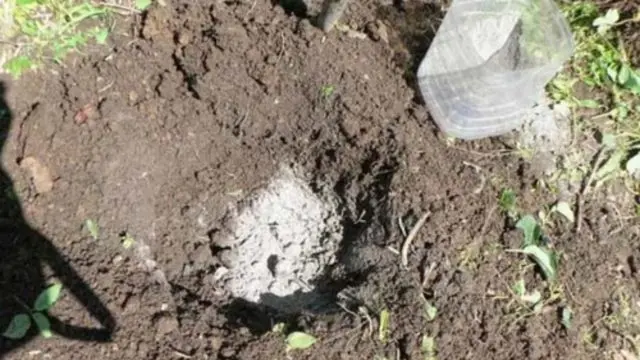
Black purple easily tolerates temperatures down to -30 ° C
Osiris fantasy
This is a dwarf variety of serrated buzulnik with a height of bushes up to 50 cm. Osiris Fantaisie is characterized by an average size of leaves, the upper part of which is green, and on the reverse side – a red-violet hue. Paniculate inflorescences, baskets consist of light brown tubular flowers and pale yellow marginal ones. This species has been cultivated since 1900.

The duration of flowering in the toothed buzulnik Osirius fantasy is 30 days
Desdemona
This variety is characterized by medium-sized bushes up to 1 m high. The inflorescences are bright orange. The color of the leaves is bronze-green above, and red-violet on the reverse side. Desdemona variety forms large leathery leaves 30 cm long. Corymbose inflorescences, which include yellow-orange chamomile flowers 5-10 cm in diameter. Buds on the shrub are formed in mid-June.
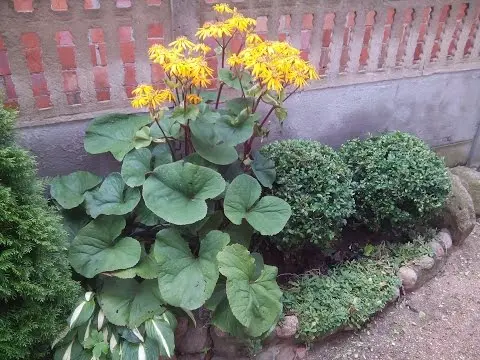
Desdemona – early flowering variety
Britt Marie Crawford
One of the most spectacular types of toothed buzulnik. It is characterized by large leaves of maroon color on both sides, which create a contrast with apricot buds. The height of the Britt Marie Crawford shrub reaches 1,0-1,2 m.
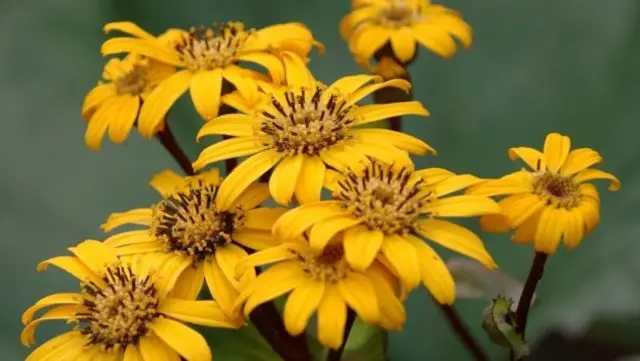
Frost resistance of the variety Britt Marie Crawford reaches -29 degrees
Application in landscape design
The demand for jagged buzulnik in landscape design is explained by the high decorative qualities of the culture, which persist throughout the season. The plant looks great in single plantings against the backdrop of a green lawn, as well as in group compositions, combining varieties with different shades of foliage and other horticultural crops.
Due to the fact that this plant loves high humidity, it can be planted on the banks of reservoirs, on the shaded side of the fence and buildings next to swamp irises, hostas, geyhera, ferns.

Toothed buzulnik is ideal for mixborders
Features of reproduction
You can get new seedlings of buzulnik jagged by dividing the bush and by seed. In the first case, you need to dig an adult bush in early spring at the beginning of the growing season. After that, clean the roots from the ground so that the recovery buds are visible. Using a shovel or a sharp knife, divide the bush into parts, each of which should have 2-3 shoots and the same number of root processes. At the end of the procedure, you need to land the delenki in a permanent place.
Growing buzulnik toothed from seeds also does not pose any difficulties. To do this, it is necessary to collect planting material at the end of October and plant it before winter in the ground. So the seeds will undergo natural stratification and sprout in the spring.
If desired, young seedlings can be grown in seedlings. To do this, it is necessary to plant in wide bowls in January, and then put them in the vegetable section of the refrigerator for 1,5 months. When finished, put the containers on the windowsill. Transplantation of seedlings in open ground should be done in September.
Rules of landing
Planting buzulnik notched can be carried out from May to September in the presence of favorable conditions. For this, biennial plants should be chosen, as they easily adapt to a new place.
Buzulnik toothed develops well in partial shade. The plant also prefers well-drained soil rich in organic matter. Therefore, 2 weeks before disembarkation, you need to dig up the site and add humus at the rate of 10 kg per 1 century. m. You should also prepare a planting hole measuring 40 by 40 cm and fill it with 2/3 of the volume with a nutrient mixture of turf, peat, leafy soil in a ratio of 2: 1: 1. In addition, add 30 g of superphosphate and 100 g of wood ash to each well, and then mix thoroughly with the ground.
Algorithm of actions:
- Make a small elevation in the center of the planting hole.

- Put a seedling on it so that the recovery buds are at the level of the soil.
- Straighten the roots gently.

- Fill voids with earth, compact the surface of the soil.

- Water the plant generously.
Care instructions
This plant is undemanding to care and therefore does not require increased attention. But in order for the toothed buzulnik to be able to fully develop and bloom profusely, you need to follow simple rules.
Watering and top dressing
Soil moisture is very important for this crop. With a lack of moisture, the plant will not die, but its decorative qualities will decrease. Therefore, watering should be carried out regularly in the absence of rain, preventing the roots from drying out.
It is best to use organic fertilizers. To do this, dilute mullein 1:10 or chicken manure 1:15. In their absence, mineral mixtures can be used. During the active growth of foliage, it is necessary to use urea or ammonium nitrate at the rate of 30 g per bucket of water. And at the time of the formation of peduncles – superphosphate 30 g and potassium sulfate 15 g for the same volume of liquid.
Weeding and loosening
After each irrigation, loosen the soil in the root circle to improve its aeration. It is also important to remove weeds in a timely manner so that they do not take away nutrients.
Preparation for winter
With the onset of frost, the aerial part of the plant must be cut off at the base. Then lay on top of a layer of humus or peat mulch 5-7 cm thick. Such a shelter will protect the buzulnik root in the event of a snowless winter.
Diseases and pests
This crop is highly resistant to pests and diseases. But in conditions of high humidity over a long period, the shrub may suffer from slugs. To protect the plant, you need to sprinkle wood ash or granulated superphosphate at the base of the bush.
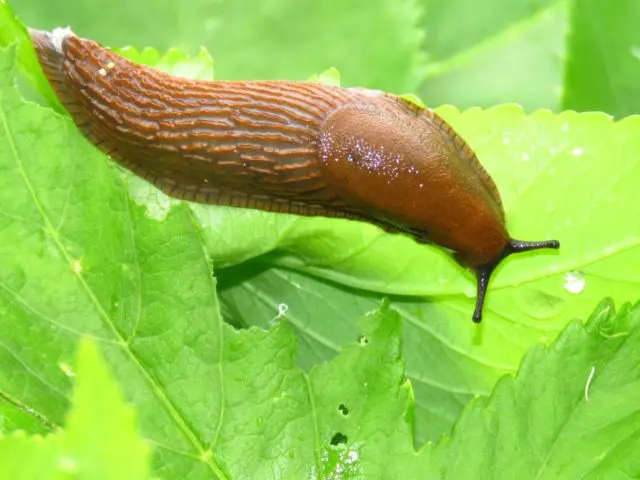
Slugs feed on young buzulnik leaves
Also, with a combination of high temperature and air humidity, the toothed buzulnik can suffer from powdery mildew. It is easy to recognize the disease by a white coating on the leaves, which subsequently becomes dirty gray. This leads to wilting of the plates. For treatment, Topaz or Skor should be used.
Conclusion
Planting and caring for a toothed buzulnik are not difficult even for beginner gardeners, so the popularity of the culture is growing every year. This is also facilitated by the fact that a perennial shrub can fully develop and bloom where other plants do not survive. Therefore, it can be used to improve shady places on the site.










